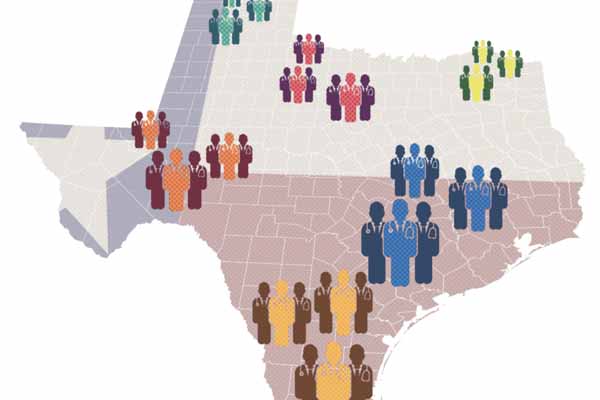
After closing on and off for more than a year, Texas’ Physician Education Loan Repayment Program (PELRP), which gives physicians a strong financial reason to practice in rural and underserved areas, is now taking applications.
And thanks in part to strong Texas Medical Association advocacy, the 2023 Texas Legislature’s $6 million boost to the program will help more physicians take advantage of it.
Physicians can apply by Dec. 1 for the 2022-23 award year and employers must submit verification by Dec. 15. Physicians seeing patients full-time in one of eight categories are eligible: family medicine-family practice, general practice, obstetrics-gynecology, general internal medicine, medicine-pediatrics, general pediatrics, psychiatry, and geriatrics, according to Texas Higher Education Coordinating Board.
Last fall, the program stopped taking new applications to upgrade to a new computer system, says Chad Contero-Puls, assistant commissioner for student financial aid services at the THECB, which administers PELRP.
Prior to that, PELRP funding had not always been robust, says Rodney Young, MD, chair of family medicine at Texas Tech University Health Sciences Center in Amarillo and past chair of TMA’s Council on Medical Education. The program was closed to applicants for 12 months, starting Sept. 1, 2021, because it was oversubscribed.
PELRP received $35.5 million in the 2024-25 Texas budget, up from $29.5 million.
The program was created in large part to draw Texas physicians to health professional shortage areas (HPSAs), which are generally designated as areas with a ratio of 3,500 –people –to –1 primary care physician by the U.S. Department of Health and Human Services.
“The program’s main mission is to get doctors to practice in areas where they otherwise would be less inclined to do so – so rural areas and underserved inner city settings would be the prototypes,” Dr. Young said.
But physicians don’t always have to work in a designated HPSA to qualify, he says. The family medicine program Dr. Young oversees isn’t located in a HPSA, but because the academic physicians who work there treat a large number of patients covered by Medicaid, an underserved population, they can qualify for PELRP.
Dr. Young himself also benefitted from the program: It paid off about 40% of his medical school debt. Today, the program will pay up to $180,000 for four years of service, per THECB. The average medical school indebtedness is about $200,000, according to the Association of American Medical Colleges.
“Often at that point of life you’ve deferred things that other people have already done,” he said. “[Physicians are] often ready to buy homes or start families, and the toll of servicing all of that student loan debt can make that a real challenge. That was true for me and it’s true for the people coming through now.”
Recognizing the need for physicians in rural areas, Texas lawmakers – with TMA’s strong support – made additional investments to improve care in those areas including:
- $3 million for the TMA-initiated Rural Residency Training Program, which is designed to specifically prepare physicians for rural practice;
- $15 million to Texas A&M-Care, a new initiative to expand health care to rural areas through a collaboration between the Texas A&M University College of Medicine, the Texas A&M Rural and Community Health Institute, and the university’s advanced practice nursing program; and
- $10 million to an initiative to expand the use of telehealth in underserved areas of West Texas.